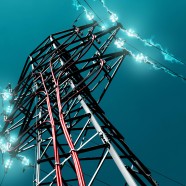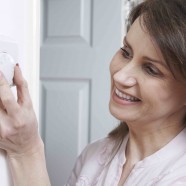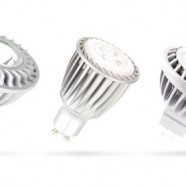3 Ways to Achieve Energy Savings in the Home
Upgrading and improving the electrical usage in your home doesn’t have to mean getting a larger electrical bill every month. In fact, newer appliances, lighting, and fixtures are more efficient than the older ones you’ll be replacing. Plan your electrical renovation with energy conservation in mind. Your electrical contractor will know about all the newest additions you can use to improve your energy conservation, so involve him at the very beginning of the planning stage to get the most effective results.
#1: Insulation
One of the most effective ways to save money on energy is to simply not waste it. Make sure you have an effective insulation layer installed in your entire home, to prevent heat from leaking out in the winter and air conditioning in the summer. Some of the places you might not have considered are:
- Around the ductwork underneath the house
- At the access point where the dryer vent goes through the wall to the outside
- Between the floor and the crawlspace beneath the house
Look through your home for cool spots or places where the floor is especially cold in the winter to help track down the leaks where your energy and money are quietly sneaking outside.
#2: Lighting
The least expensive type of lighting is completely free: sunlight. Open your drapes and curtains on all sides of the house during the day, especially during the colder months of the year. Not only can you eliminate the need for keeping lights on during the day, the sunshine will add a certain amount of heat to the interior of your house, cutting down on the power needed to run your furnace.
When you do need to turn on the lights, save even more in energy costs by having an LED retrofit done where you currently have incandescent or older fluorescent bulbs. LED lights are cooler, so you’ll save money on air conditioning in the heat of summer, but they only use a fraction of the amount of electricity to run and they last about ten times longer than traditional bulbs, for the most part.
#3: New Technology
One of the advantages of planning a renovation with an electrical contractor is that he can let you know about new technology you may not have heard about. Incorporating this new tech into your home can increase your energy conservation and, as a consequence, save yourself money on your FPL bill each month.
Timers for your lights are nothing new, but today’s timers can control your whole house’s electrical system. Install an advanced timer in your home and your outdoor lighting will come on from dusk to dawn, the bathroom light will turn off after your kids leave it on, and lights will go on and off when you’re not there to fool burglars into thinking you’re home.
Saving money on lights is good, but energy conservation with HVAC will save you much more money. A programmable thermostat will allow you to set the heat or air conditioning temperature to different levels for different times of the day. Don’t heat the house when you’re gone, turn the heat down for a cool and comfortable night’s sleep, but warm up the house half an hour before the kids’ toes hit the tile floor. By only using power when it’s most needed, you’ll be more comfortable while using less energy.
Read MoreProtect Your Family by Installing a Backup Generator
Intense storms are a fact of life in southern Florida, and an almost daily occurrence in some parts of the year. It’s never a matter of whether or not you’ll get a blackout at least once each season. It’s more a question of when and how often. Some power outages are brief and cause little inconvenience, but other major blackouts can last for days, causing you to have to move into a hotel until it’s over.
Savvy homeowners protect their families from the effects of a major blackout by installing a standby generator system. Knowing you have power security will give you a sense of peace of mind, and can ensure your family’s physical safety, as well. Being without power is more than just a quaint overnight camping trip at home. Genuine dangers can arise when you’re without electricity for a length of time, and an emergency power supply can reduce or eliminate those dangers.
Lighting
Emergency candles are just that: made for an emergency. Keeping candles lit for hours on end can be a severe fire danger, especially with bored children running through the house trying to entertain themselves. Flashlights only work until the batteries die, and do nothing for general room light. Worst of all, security lighting outside disappears in a blackout, leaving your family vulnerable to burglars and other criminals. The safest and most reliable lighting method during a power outage is always using a backup generator. A whole home generator will keep your lights on, inside and out, until even the worst blackout is over.
Health
Your family’s health is dependent on electrical power in more ways than you may realize. Without electricity, your family members may:
- trip and fall in darkened rooms, hallways, and stairs
- get burned from using candles and food warmers
- suffer from spoiled food or medication that should be refrigerated
- fall ill from high heat and humidity from lack of air conditioning
Light equals safety in so many ways, and a backup generator will keep your family safe from injury and illness due to lack of power.
Costs
The price of having an electrical service company install a backup generator may seem significant, but your alternate power supply can pay for itself in lower insurance premiums and savings from avoiding losses. Refrigerated and frozen foods shouldn’t be used if stored without power for more than 24 hours. The average family loses hundreds of dollars worth of meat, dairy, and other cold food whenever there’s a significant power outage. Even if you only have a small amount of food on hand, you’ll spend a large amount on ice to keep it cold, and that’s if you can find ice available and without a severe price increase. Keeping the lights on can deter criminals that might otherwise roam your darkened neighborhood, saving you the cost of broken windows and stolen property. For the longest blackouts, families are forced to move into motels and hotels until the power returns, and a standby generator system can save you money by removing the need for that expense. If you have a bad couple of years with significant blackouts, your backup generator system may pay for itself in just a few seasons.
For a professional assessment to determine what size standby generator would work for your home, contact us for a consultation today.
Read More5 Reasons You Need Surge Protection for Your Home or Business
In southern Florida residents are used to living through thunderstorms on an almost weekly basis; so much so that the state is the lightning capitol of the country. Living through so many lightning strikes every year might make you blasé about the dangers they pose to your property, but your home and business both need and deserve surge protection. Whether it’s from power starting up after a blackout or lightning striking a nearby transformer, electrical surges can do thousands of dollars’ worth of damage unless you’ve got a surge protector installed.
What is Surge Protection?
So, what is surge protection and why do you need it? The term “surge” refers to fluctuations in the amount of electricity running through a line. This can vary, and if it suddenly peaks at a very high level, it can burn out or damage multiple systems in your home or business. Surge protection is a way to even out the effects of the electricity, keeping the power running without sending spikes of power to your appliances. Surge protectors absorb the brunt of the shock, allowing it to stop before it moves on to damage your expensive electronic equipment.
Computers
If your business is current in the digital age, the biggest danger you may find in thunderstorms is with your computers. Without a surge protector, one lightning strike can shut down your entire computer system, wiping out memory and frying hard drives. A dedicated protector places between your computer and its power source will keep your data from disappearing, and an advanced version will even supply 30 minutes of power or more to give you the opportunity to shut everything down before it suffers any damage.
HVAC Systems
You might think of adding surge protection between your computer and its power source, but what about a more expensive system, your home HVAC complex? Electrical surges can silently kill air conditioners, dehumidifiers, and even furnaces, leaving you with hot and humid Florida weather in your house and a large repair bill. Call someone with electrical contracting experience to have them inspect your HVAC system. He’ll recommend what type of improvements you need, if any.
Appliances
When you think of power surges burning out appliances, you might picture hair dryers and televisions, but the massive surges that are common in Florida can take out your kitchen appliances as well as the smaller items in your house. An up-to-date appliance surge protector is crucial for protecting the larger appliances in your house that represent such a big investment in your home, as well as for your daughter’s beloved planetarium nightlight.
The Warranty
Many reputable manufacturers of surge protector power strips offer a home warranty covering any equipment plugged into its outlets. In fact, one U.S. Model offers a $300,000 warranty for anything you have plugged into their surge protector during power surges. That may be the least expensive homeowner’s insurance addition you’ll ever find.
Power Surges Over Multiple Wires
You may have most of your home covered by a circuit breaker and multiple power strips, but power surges can come through cable and phone wires as well as the major power cables. Make sure you have surge protection with the ability to connect with these wires, to give extra protection to televisions, telephones, and computers.
For more information on your home or business surge protection requirements, call us today for a free consultation.
Read MoreUnderstanding How Smart LED Solutions Work
Do you often forget to switch the lights off? Between the growing popularity of greener technology and the plain intelligence of using less expensive resources, smart LED solutions are fast becoming the best choice for new installations as well as business retrofits for all types of lighting. Much more than just plain LED retrofits, smart LED solutions are a complete system designed to manage lighting in your building, giving you the optimum in visibility along with the lowest possible energy costs. Smart LED lights are made up of a tripod of newer technologies, each of which relies on the other two to create the optimum method of energy usage.
Smart LED Lights
The main leg of the smart solutions tripod is the LED light bulbs themselves. LED retrofits themselves can save you extraordinary amounts of money on your energy bill. In general, they use 80 percent less energy than traditional light bulbs and, unlike short-life incandescents, LED bulbs last 25,000 to 50,000 hours. This means double savings, as you won’t have to replace your bulbs every couple of months like in a traditional lighting situation. Add to that the lack of frustration you’ll feel by knowing your bulbs won’t burn out exactly when you need them the most, and smart LED lights look more intelligent all the time.
Occupancy Sensors
Human beings are forgetful, and more energy is wasted through forgetting to turn off the lights than just about any other cause. Occupancy sensors seek to solve this problem by noticing when people are in a room and when they’ve left. Motion sensors are the most common method of telling when a person is in a room, and smart systems make use of them in almost every model. This doesn’t cover every situation, though, since people tend to sit still when watching television, reading books, or doing crafts and hobbies. To make up for this shortcoming in the motion sensors, advanced smart systems also include heat sensors to test when a live human body is in the vicinity. They can be set for different size beings so your cat doesn’t set off your lights all night long, but they still won’t turn off your reading light just as you’re getting to the most exciting part of your book. Knowing your smart LED lights will always be on, except when you don’t need them any more, is a touch of the future that can save you money today.
Daylighting Controls
Turning lights on and off depending on whether people are in the room is a great way to save money, but there are still times of the day when it makes no sense to turn on the lights at all. In the middle of the day in a room with plenty of windows, there’s no need to any type of lights to burn. On the other hand, in a room with one small window that faces east, evening might be a good time to start turning on some of the lamps. Daylighting controls have sensors that detect the amount of light already naturally in a room, then decides how much more artificial light is needed for normal human activities. Often attached to dimmers, this crucial part of a smart LED lighting system gradually adds light throughout the day as the room gets dimmer, and turns the lights off when the sun shines through the window.
Savings
While the savings found from using smart LED lights is significant, having a licensed, professional electrician install a smart LED solutions package in your home or business has the power to save almost 90 percent of the total energy usage formally found every month. Not only is this good business, as it saves a significant amount of money, it’s good for the environment because of the much smaller carbon footprint your building will leave.
Read MoreHow to Finance Energy Efficient Upgrades for Your Business
The savings and energy conservation your business realizes from a well-designed upgrade should make up for any concerns about financing an energy efficient upgrade. With the government and private company help available, finding the financing shouldn’t be an issue.
For many businesses, an upgrade can produce enough positive energy savings that any outlay can be paid back simply through lower energy bills each month. When investigation how to conserve electricity while finding the money to pay for it, business owners should investigate non-traditional methods as well as the usual government programs.
Justifying the Cost
In a financial environment that’s just beginning to stabilize again, you might find it difficult to justify investing thousands of dollars into newer energy efficient upgrades for existing systems, but it’s important to keep in mind that even high end improvements will pay for themselves over time. In addition, investing in energy conservation for your business is the only way to guarantee a lower energy cost in the future, which may include rate hikes over which you have no control.
Self Financing
If you’re planning on a relatively small energy conservation upgrade, the simplest way to pay for the project is to use funds from your company savings account. Once the upgrade has been installed, calculate how much the upgrade saves your business each month to determine the amount of money to repay the savings account.
The Department of Energy
While the federal Department of Energy doesn’t give cash outright to businesses, it does offer an array of energy tax credits to lower your financial burden at the end of the year. In addition, local and state departments of energy offer multiple loan and financing programs to small businesses.
For example, in Florida the Clean Energy Investment Program offers low-interest loans to businesses, and is created to encourage the adoption of energy conservation methods and energy efficient upgrades. Check with your city and county government to access any programs to help you finance your electricity conservation investment.
PACE
PACE, or Property Assessed Clean Energy, is a governmental program designed to encourage energy conservation by financing energy efficient upgrades. Cities or counties in the program loan homeowners and business owners the funds to upgrade their systems. The loan is then paid back on a regular schedule, usually for fifteen or twenty years, by paying an increased amount on the annual property taxes.
For most users of the program, they find very little difference in actual financial outlay by banking their energy bill savings and putting it toward the tax bill. Using this method, you may even see a profit over and above the expected repayment rate, depending on how efficient your new system is.
On-Bill Financing
Although not yet available in Florida, on-bill financing is a popular concept that’s growing throughout the United States. Utility companies provide the initial funds for homeowner or commercial energy conservation improvements, in the form of a loan. This loan can then be paid back through a monthly payment on the energy bill.
While many businesses find a small increase in monthly outlay, some who have installed particularly efficient systems may end up with a zero-sum situation, with their savings equaling their additional payment, and so won’t see any change to their electrical bill at all.
Read More8 Benefits of LED Retrofit Lighting
If you’re comparing the costs of retrofitting LED lights to replace your traditional bulbs, the initial cost might be a reason to make you think twice. It’s true, LED, or Light Emitting Diode, lights do cost more in their first installation, but after they’re in they are virtually maintenance free for many years. Besides the benefits of paying a fraction of the cost of your old power bill, you’ll find many more benefits to changing your lighting from incandescent or fluorescent to LED.
Benefit #1: Lower Energy Costs
It can’t be denied that the much smaller energy usage in LED retrofit lighting compared to traditional bulbs makes a powerful argument for LED retrofits in your building. Studies have shown that, in normal daily use, LED lights use a small fraction of the power that traditional bulbs do.
Benefit #2: Long Life
On average, LED bulbs are rated to last 100,000 hours. This means that you can light a building for eight hours each day and you won’t have to replace the bulb for about 20 years. Even if you leave the lights on 24 hours a day, it would take over 11 years for the LED bulb to be exhausted. In addition, these bulbs don’t burn out, leaving you suddenly in the dark. LEDs simply get dimmer and dimmer at the end of their lives, giving you ample warning when it’s finally time to change them.
Benefit #3: Low Voltage
Replacement LED lamps use so little voltage that it’s possible to illuminate the outside of your entire building using the power of a few solar energy panels. This makes them extremely useful for remote areas, plus they’re reliable even in a power outage.
Benefit #4: Greener Light
LED lights contain absolutely no dangerous materials and are 100 percent recyclable. Unlike fluorescent bulbs, which can contain mercury and other dangerous chemicals, LEDs are completely safe and inert.
Benefit #5: Frequent Switching and Instant On
Unlike fluorescent bulbs, which can take half a minute or more to warm up and reach full lighting strength, LED lights are instantly bright the second you turn on the switch.
In addition, you can switch LED lights on and off as frequently and rapidly as you like. This behavior severely affects the life of traditional light bulbs, but it has no effect on LED retrofits.
Benefit #6: Work Well in Extremely Cold Weather
In areas where the outdoor temperature frequently drops below freezing, or in commercial buildings that have cold areas such as freezers, traditional bulbs can pose a challenge: less efficient operation and a shorter lifespan. LED lights work exactly the same whether the environment is 72 degrees or below zero on a daily basis.
Benefit #7: No UV Emissions
For interiors that have light-sensitive furnishings such as antiques in museums, paintings in art galleries, and fabric in historic quilt collections, LED retrofits are much safer to use than traditional bulbs. These lights give off almost no infrared light and virtually no UV emissions, making them the safest lighting choice for your most delicate property.
Benefit #8: Durable and Long-Lasting
LED lights are made of damage resistant materials, and can withstand wind, water, jostling, dropping, and even purposeful vandalism. This makes them ideal for construction sites, outdoor public areas, commercial buildings, and anywhere outdoors that’s frequently subject to severe weather.
Read More






Recent Comments